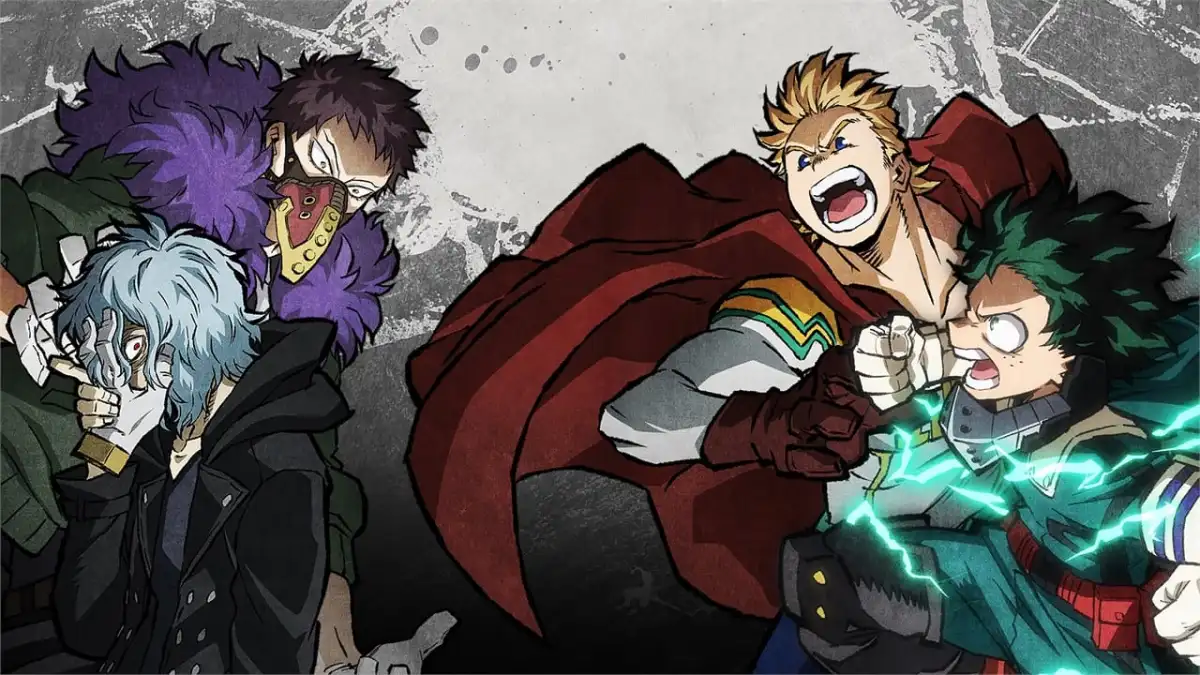My Hero One’s Justice 2 On PlayStation 4
My Hero One’s Justice 2 is a lot like My Hero Academia’s protagonist Izuku Midoriya at the start of the series. It may not make a lot of huge steps forward, but it does show the potential the series has with every step it takes.
Picking up where the first game left off, My Hero One’s Justice 2 covers the next two arcs of My Hero Academia’s story – those being the Provisional License Exam arc and the Shie Hassaikai arc. Key events are retold via a comic book-esque series of stills from the show, and players take up the role of characters during key moments to battle it out with other heroes, villains or stock characters.
If this sounds almost identical to a description of the last game, that’s because it is. At its core, One’s Justice 2 is more of the same with a few new faces and elements thrown in to justify it being a sequel. The combat, gameplay modes and such all still work in the same ways as before, with some minor tweaks made here and there to improve the overall quality of life for players.
This proves to be both good and bad for the overall experience. On one hand, the lack of notable changes and improvements means that larger issues from the last game are still prevalent.
Character balancing can still feel all over the place, with certain characters or types of characters proving over-powered compared to others. Character models aren’t always as sharp and refined as one would expect for a current-gen console, and every so often there will be clipping or graphical issues in more constricted zones or arenas.
They’re all issues which fans of the first game will know all too well, and while none of them are deal-breakers, they still create annoyances that drag down the overall experience on a regular basis.
On the other hand, this means that the high points from the original game are still present too.
Aside from the aforementioned issues in smaller arenas, the game is solidly made on a technical front. Whether players choose to play online or offline, they’re in for a fairly smooth experience with minimal lag and quick, responsive controller input.
The gameplay is also still deceptively deep. Each character offers the same suite of basic, strong and heavy-hitting combos, with special moves thrown in to further mix up the formula.
These are further diversified by the ability to chain them together in several different ways, and the variety provided by each character’s specific Quirk only allows for more variety in how players approach any given fight.
Learning to time a homing fireball as Dabi; interrupting an opponent’s combos with Deku’s lightning-fast Shoot-Style kicks; or pummeling targets from afar with Chisaki’s matter manipulation attacks all serve to diversify the overall experience, and set each character apart in some interesting and meaningful ways.
Speaking of characters: One of My Hero One’s Justice 2’s most notable improvements is a more sizable roster. In addition to characters from the last game, 20 more characters have been added for players to choose from.
These range from characters introduced in the arcs covered in the story mode – like Kai Chisaki or the students from Shiketsu High – to heroes and villains not featured in the last game like Mina Ashido or Twice.
Not only that, but each of these new characters are fleshed out and diverse enough to feel different from other characters in the roster, further helping the gameplay to feel varied and deep.
Each character’s appearance can likewise still be customized with accessories, alternate costumes and the like via the game’s customization options, with new outfits and accessories available compared to the previous game.
Otherwise, My Hero One’s Justice 2 maintains the quality from the first game. The music is still passable enough, there’s a decent amount of variety in the different arenas you can fight in, and there’s just enough fan service to appease fans with a virtual toy box for them to smash their favorite characters against each other in.
My Hero One’s Justice 2 is a better game than its predecessor, if only slightly. It makes minor but notable improvements over the existing formula, and while there are still issues to be resolved in regards to the series as a whole, it manages to keep from making any major missteps that would bring the experience down.
Casual and hardcore fans of My Hero Academia alike will still find something to enjoy in the game, and those looking for a fun arena brawler could still do far worse than this sequel.
Pros
Cons
Minor technical issues like clipping
Character balancing can feel all over the place
